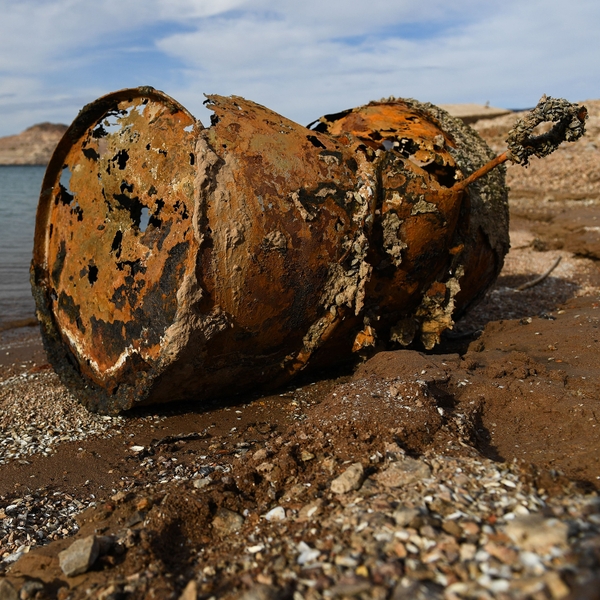Man In a Can
With Lake Mead drying up due to drought and climate change, the famous desert reservoir is revealing grisly secrets from the past, including the remains of people thought to be victims of Las Vegas foul play. Mark Sundeen hits Nevada for a freewheeling exploration of dark deeds, a rapidly unfolding apocalypse, and a parched future that will dramatically affect the entire American Southwest.
New perk: Easily find new routes and hidden gems, upcoming running events, and more near you. Your weekly Local Running Newsletter has everything you need to lace up! .
May 1, 2022, sunny. Seventy degrees at dawn, heading to the mid-eighties. Perfect Lake Mead weather. Out on the water, @onechickentaco hits the throttle and his boat rises up on a plane, gliding over smooth Lake Mead glass. Real name: Nathan Hollister. His wife, Shawna, is beside him, wearing her usual boat attire: bikini and sunglasses. Damn gurl, he writes on Instagram. Green lake, blue sky, tan cliffs, jagged brown mountains—just right. “My goal is to have more fun than everyone around me at any given time,” his site bio says.
Slight hassle getting out there today. The boat ramp had to be extended a quarter-mile across the sand. Climate change, megadrought. A sign warned:
DANGER
LAUNCH AT
YOUR OWN RISK
LOW WATER LEVELS
After cruising around for a bit, Hollister beaches on a spit of sand that was underwater a few weeks ago. Posts a shot of the boat to his 412 followers. No one on board. Towel draped over the seats. My boat is running like a raped ape, he writes. #boat #fun #lake #float #pretty.
He wades in up to his knees and casts a lure. The good life. He was in Afghanistan, in the Air Force, and now he lives in Las Vegas, spends weekends riding boats and dirt bikes and shooting guns for fun. He posts a pic of the rod and reel, his feet immersed in clear turquoise.
By 3 P.M., it’s around 86. Nathan and Shawna are getting baked by sun and dried by wind as he cruises back into Hemenway Harbor, a big marina in Lake Mead National Recreation Area, to the west of Hoover Dam. That’s when it happens. Later Shawna will describe the moment to a TV reporter: “We heard a woman scream from the side of the beach, and then my husband went over to obviously see what was wrong. And then he realized there was a body there in a barrel.”
The barrel was on its side in the sand. A week earlier, it had been submerged. A few years ago, 40 feet under. Decades ago, 200 feet. It’s rusted out, so you can see a pelvis and femurs scrunched up in there. Holy shit. Shawna takes a picture.
“It’s heartbreaking to see that it’s someone’s loved one out there,” she tells the reporter. “So I hope they get justice, or at least somebody finds out who it is.”
She posts a picture on Insta. “We found a body at Lake Mead today 😢,” she says. By that night, the photo is all over the . All over the internet. Some outlets blur the bones—what, to protect the children? Others run it as is. Shawna writes on Facebook: “Well shit they put my name out there!”
Her husband writes: “Snitch!!”
Neither of them returns multiple phone calls and messages from me, inviting them to talk about it. Guess I’ll have to ask somebody else.










